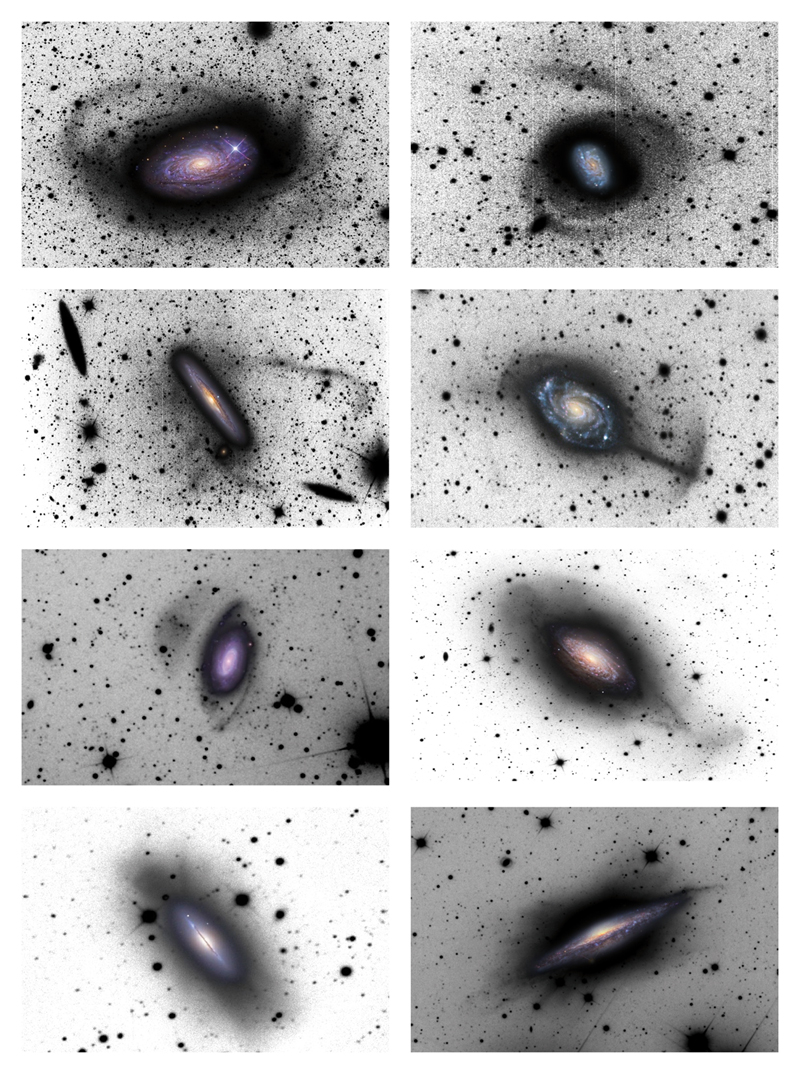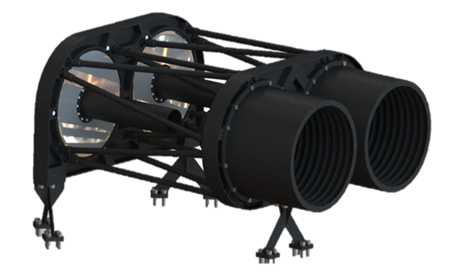The IAA-CSIC participates in ARRAKIHS, the European Space Agency's mission to study dark matter
This is the first mission of the ESA Scientific Program coordinated by Spain. The IAA-CSIC will carry out the coordination of the observational strategy of the mission
The European Space Agency (ESA) Science Programme Committee yesterday officially approved the selection of the ARRAKIHS mission, the first ESA Science Programme mission led from Spain, in particular from the Institute of Physics of Cantabria (IFCA, CSIC/UC), with the aim to be launched in 2030.
The ARRAKIHS mission (acronym for "Analysis of Resolved Remnants of Accreted galaxies as a Key Instrument for Halo Surveys") was submitted to ESA's Fast Missions Opportunities (F-Missions) programme in February this year. An international consortium is involved in its development, with research centres from Spain, Switzerland, the United Kingdom, Belgium, Sweden, Austria and the United States. It subsequently received support from the Spanish Ministry of Science and Innovation through its qualification under ESA's PRODEX programme, managed by the Centre for the Development of Industrial Technology (CDTI).
The main scientific objective of the mission lies in the study of dark matter, a type of matter that neither emits nor reflects light and which could be up to five times more abundant than ordinary matter (that which forms galaxies, stars and planets). Because of its properties, its direct detection is very complex and, for now, it can only be detected through its gravitational effects. It is precisely these effects on satellite galaxies orbiting larger galaxies, such as the Milky Way, that ARRAKIHS will be able to discover and characterise in order to reveal the nature of dark matter.
In addition, the deep images obtained by ARRAKIHS will make it possible to detect the more diffuse tidal streams, which are the debris from the destruction of dwarf galaxies as they interact with larger galaxies. The detection of this debris, predicted by cosmological simulations, will allow direct corroboration of the process of satellite galaxy clumping that is part of the construction of the most massive galaxies like our own.
“The idea for this mission was born more than a decade ago, inspired by the deep images of nearby spiral galaxies obtained with amateur telescopes –notes David Martinez-Delgado, Talentia Senior researcher at the Institute de Astrophysics of Andalusia (IAA-CSIC) who is leading the coordination of the mission's observational strategy, including pre-launch ground testing–. These images allowed us to detect for the first time the brightest stellar streams in the halos, but our observations were limited by the brightness of the sky despite observing from some of the darkest places on Earth. The possibility of orbiting a small-aperture telescope that could take wide-field images of these nearby galaxies was the only solution to reach the detection limits needed for a direct comparison with the cosmological simulations”.

An astronomical milestone
For the mission, the company Satlantis has designed and developed a binocular visible and infrared camera that will image one hundred galaxies similar to the Milky Way, reaching a surface brightness between five and one hundred times deeper than the best images taken from ground-based observatories. The depth, resolution and large field of the images provided by ARRAKIHS will be an astronomical milestone and will provide key information about the knowledge of dark matter in the Universe and its origin.
Through these images, and using novel signal processing methodologies, it is expected to be able to determine whether the nature of dark matter, as suggested by other cosmological observations, is of the cold type, i.e. made up of particles moving at non-relativistic velocities (speeds significantly slower than light). This is a key aspect: although the cold dark matter model seems to be the one supported by large-scale cosmological observations, some of its properties on small scales, the size of galaxy halos, are in tension with current observations.

Thus, the sensitivity and ultra-low surface brightness expected from ARRAKIHS will allow the predictions of the cold dark matter model to be confirmed on galaxy halo scales, and at unexplored levels of surface brightness.
The research team responsible for ARRAKIHS, led by the IFCA, is formed by the Universidad Complutense de Madrid (UCM), the Institute de Astrophysics of Andalusia (IAA-CSIC), the Instituto de Ciencias del Espacio (ICE-CSIC), the Centro de Astrobiología (CAB, INTA-CSIC) and the Centro de Estudios de Física del Cosmos de Aragón (CEFCA), in collaboration with the company Satlantis.
Instituto de Astrofísica de Andalucía (IAA-CSIC)
Unidad de Divulgación y Comunicación
Silbia López de Lacalle - sll[arroba]iaa.es - 958230676
https://www.iaa.csic.es
https://divulgacion.iaa.csic.es

